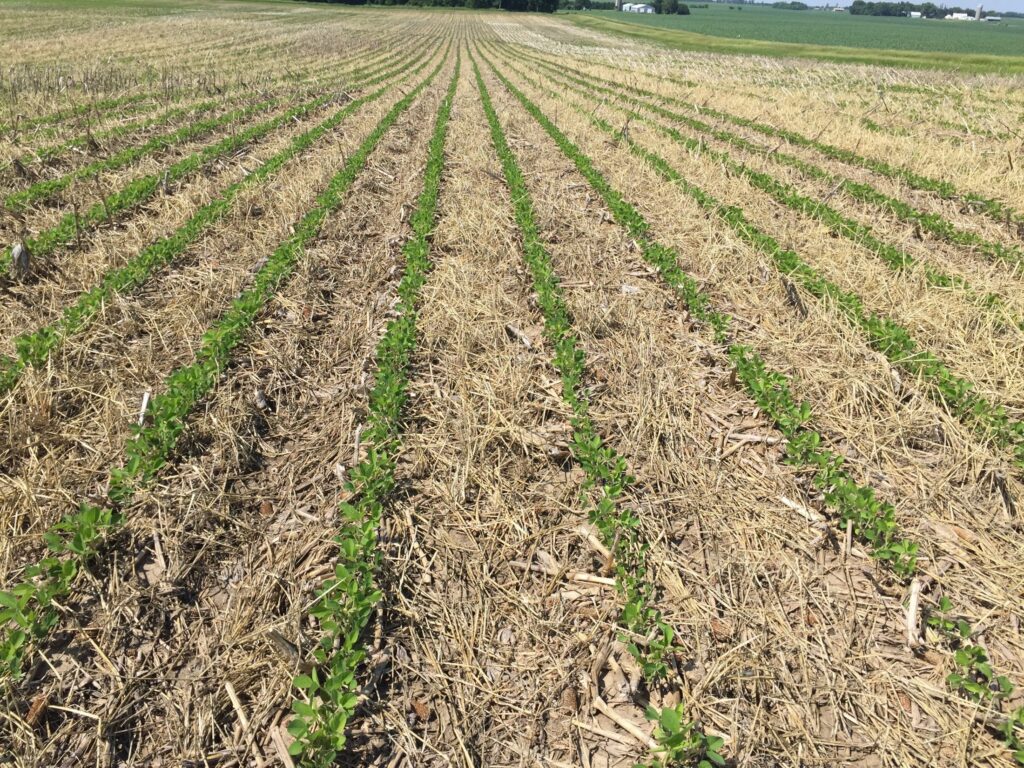On February 12th Illinois Cover Crop On-Farm Network was joined by TJ Kartes of Saddle Butte Ag. TJ is a seed sales representative who covers southern Minnesota, Iowa, and parts of Illinois and Missouri. TJ discussed trends he has observed with customers who are having considerable success with cover cropping and shared basic cover crop recipes and strategies that are being used by farmers.
One consistent trend across the corn belt is the desire to use a winter kill cover crop ahead of corn. Ahead of soybeans, however, farmers are more likely to look for over wintering species– cereal rye is the best example. TJ encourages farmers to find spots in their operations and crop rotations where they would have the easiest entry into cover crops or the best payoff for using them. Frequently, these areas are on canning acres or after a silage harvest. Additionally, current cover cropping trends tend to favor cereal grain species – cereal rye, wheat, triticale, and barley. Annual rye grass is gaining more interest and offers some practical benefits, but TJ reminded the group to be cautious and certain about what a farmer is hoping to achieve due to the variation in annual ryegrass types. Some variations will be more likely to over winter than others. If a farmer has an overwintering variety, they need to be sure to have a termination plan ready to go in the spring.

TJ encourages his customers and potential customers to find the spots in their operations and crop rotations where they would have the easiest entry into cover crops.
As with any cover crop recipe, it is critical to pay attention to seed sizes and seeds per pound to make sure applied rates are correct. Farmers are encouraged to work with their cover crop sales representatives on seeding rates. It is encouraged that they know what species are going to be utilized and whether the species will survive the cold winter temperatures.
When looking at successful strategies for cover crops before corn, TJ recommends using anywhere from 2-4 species of cover crops – some overwintering and some winterkill. He has found that many farmers with seed drills have set them up to allow for a “strip or no-till” gap on 30” spacing where the corn planter will run in the spring. This lets the benefits of the cover crop be maximized while still allowing the opportunity to add fertility and give a cleaner row and seed bed for the corn in the spring. These precision type applications of cover crops will continue to advance and will likely become a critical part of making cover crops ahead of corn a more widely adopted practice.
Ahead of soybeans, TJ explained that cereal rye is a no-brainer. It is tried and true and is a proven option to employ before a soybean crop. TJ shared that he adds some other species in when it’s possible and makes sense to do so. He looks for opportunities to add winter camelina into the mix for some added diversity and different rooting structures. This process appears to work well when the camelina is not planted too early. If seeding is expected to be earlier in the fall, TJ suggests adding in brassicas such as radish and kale. These will winter kill but can offer some rooting and nutrient scavenging benefits through the fall before they die out.

If seeding is expected to be earlier in the fall, TJ suggests adding brassicas such as radish and kale.
The ICCON session concluded with a very informative Q&A session. TJ was able to answer some unique questions and offer additional insight on successful strategies. He is clearly a knowledgeable leader in the cover crop arena. We would like to extend our appreciation to TJ for joining us!
TJ Kartes’s full presentation can be viewed on ISAP’s YouTube channel. ICCON continues our monthly webinar in March. Register for the upcoming ICCON call here. If you are interested in joining the Illinois Cover Crop On-Farm Network to learn about new research and hear from cover crop specialists across the Midwest, please join our google group by sending an email to hello@ilsustainableag.org.